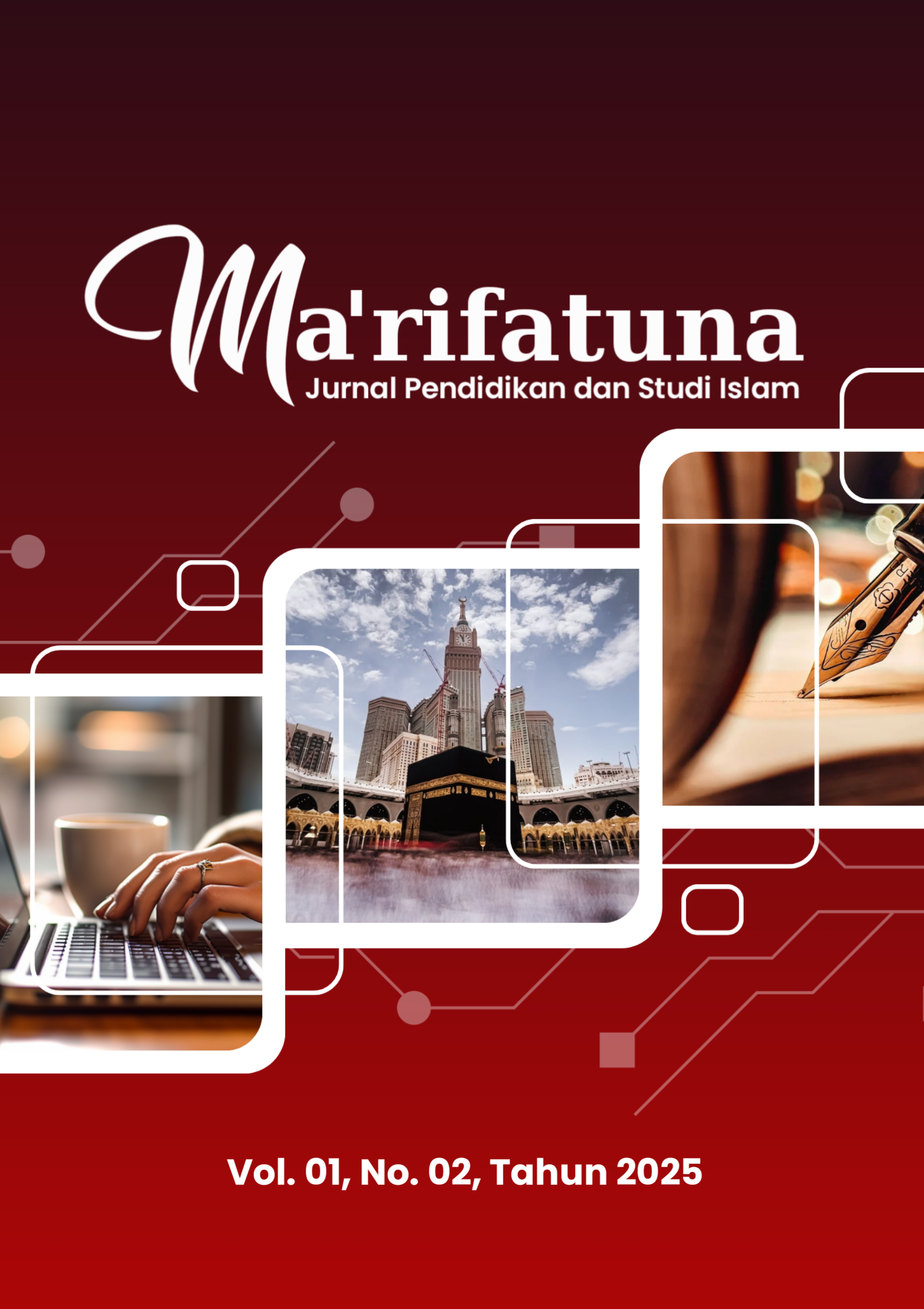Harmonisasi Seni dalam Perspektif Studi Islam
Keywords:
Art Harmony, Islamic Aesthetics, Spiritual ExpressionAbstract
The concept of art harmony in the perspective of Islamic studies emphasizes the integration of aesthetics with spiritual values. In Islam, art is not merely a product of human creativity, but a reflection of the Divine order. The harmony in art is considered essential for maintaining balance in the creation and a means to elevate the soul. The study of Islamic art highlights the importance of unity, proportion, and symmetry, which are believed to mirror the perfection of Allah’s design. Islamic art does not focus on depicting the physical world but instead emphasizes abstract expressions such as calligraphy, geometric patterns, and arabesques. These art forms are harmonized with Islamic teachings, aiming to avoid idolatry and material distractions, while fostering deeper contemplation of the Creator. The role of Islamic philosophy in art is crucial, as it provides a framework for understanding the moral and spiritual dimensions of artistic expression. By exploring the harmony between faith and art, this study seeks to highlight the essential role of art in promoting Islamic values and fostering a deeper connection with the Divine.
Downloads
References
Binti, A.Z. "Spiritualitas dan Seni Islam Menurut Sayyed Hossein Nasr." Jurnal Peradaban, vol. 2, no. 2, 2022, pp. 35-50. https://media.neliti.com/media/publications/63995-ID-none.pdf
Setyawan, Agus. "Konsep Seni Islami Seyyed Hossein Nasr." Jurnal Filsafat, vol. 18, no. 2, 2008, pp. 123-135. https://journal.unnes.ac.id/nju/index.php/harmonia/article/view/809
Yatim, Badri. Seni dalam Islam. Pustaka Al-Kautsar, 2001. https://lib.pasca.isi.ac.id/index.php?p=show_detail&id=4461
Sutrisno, Mudji, dan Hendar Putranto, editor. Estetika Filsafat Keindahan. Kanisius, 2005. https://repository.paramadina.ac.id/1058/1/2018-spiritualitas%20seni.pdf
Schuon, Frithjof. Understanding Islam. World Wisdom, 1998. https://en.wikipedia.org/wiki/Frithjof_Schuon
Nasr, Seyyed Hossein. Islamic Art and Spirituality. State University of New York Press, 1987https://lib.pasca.isi.ac.id/index.php?p=show_detail&id=4461
Nasr, Seyyed Hossein. The Heart of Islam: Enduring Values for Humanity. HarperOne, 2004. https://en.wikipedia.org/wiki/Seyyed_Hossein_Nasr
Burckhardt, Titus. Art of Islam: Language and Meaning. World Wisdom, 2009. https://en.wikipedia.org/wiki/Titus_Burckhardt
Spanjaard, Helena. Artists and Their Inspiration: A Guide Through Indonesian Art History (1930-2015). LM Publishers, 2016. https://en.wikipedia.org/wiki/Helena_Spanjaard
Rondhi, Mohammad. "Fungsi Seni Bagi Kehidupan Manusia: Kajian Teoretik." Imajinasi: Jurnal Seni, vol. 8, no. 2, 2014, pp. 115-130. https://jurnal.isi-ska.ac.id/index.php/brikolase/article/download/4163/3233
Wildan, Raina. "Seni dalam Perspektif Islam." Islam Futura, vol. 6, no. 2, 2007, pp. 78-90. https://www.researchgate.net/publication/349076358_SENI_DALAM_PERSPEKTIF_ISLAM
Saidah, Nur. "Pendidikan Agama Islam dan Pengembangan Seni Budaya Islam." Jurnal Pendidikan Agama Islam, vol. 5, no. 1, 2008, pp. 45-60. https://repository.ptiq.ac.id/id/eprint/1398/contents
Bahar, Nooryan. Kritik Seni. Pustaka Pelajar, 2003. Buku ini mengkaji berbagai aspek kritik seni, termasuk dalam konteks seni Islam. https://repository.ptiq.ac.id/id/eprint/1398/contents
Hamzah, Amir. Tema Islami Seni Lukis Ahmad Sadali. FSR ISI Yogyakarta, 1998. https://en.wikipedia.org/wiki/Ahmad_Sadali
George, Kenneth M. Picturing Islam: Art and Ethics in a Muslim Lifeworld. Wiley-Blackwell, 2010. https://en.wikipedia.org/wiki/Ahmad_Sadali
Downloads
Published
Issue
Section
License
Copyright (c) 2025 Meriva: Jurnal Pendidikan dan Studi Islam

This work is licensed under a Creative Commons Attribution-NonCommercial-ShareAlike 4.0 International License.
Deprecated: json_decode(): Passing null to parameter #1 ($json) of type string is deprecated in /home/u886421367/domains/ejournal.merivamedia.com/public_html/plugins/generic/citations/CitationsPlugin.php on line 68



